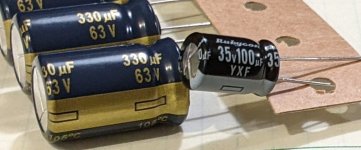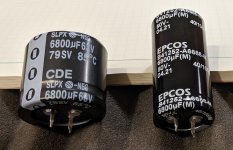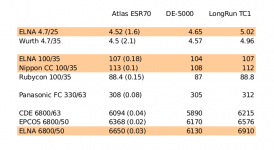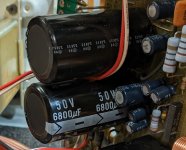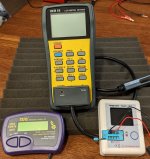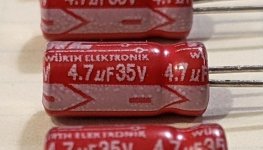I have many years of experience with precision measurement of poly caps and they tend to measure very close to spec. Lately I have been doing some amplifier board work and notice that whereas old (80s) electrolytic caps tend to measure OVER the rated capacitance, new units tend to measure UNDER rated capacitance. For measuring, I have both the DE-5000 and the Atlas ESR70. This happens even when ESR for the older cap is lower than the ESR of the newer cap.
Is this common knowledge?
Is this common knowledge?
It would help if you mention brands and types. If it is with capacitors of the brands Aliexpress and Ebay in the Cheap and Too Good To Be True series then yes.
Higher ESR is strange as ultra low ESR caps have been invented after the 80s. Make sure to compare with for instance Pana FC or similar.
Higher ESR is strange as ultra low ESR caps have been invented after the 80s. Make sure to compare with for instance Pana FC or similar.
Last edited:
It most likely depends on earlier, practical manufacturing technology and tolerances of the caps. For time immemorial, electrolytics had required a very broad tolerance rating to be an economic proposition but less so today, where <10% variation is routine. Knowing that, manufacturers would find cost advantages in reducing the median capacitance spec. whilst remaining within minimum tolerance. As long as we don't rely on caps being over-spec. for some reason, there should not be any problem with those that remain true-to-spec. for their expected lifetime.
See attachments for photos and measurements. Old caps (circa 1980s) are shown with red background in the table. Numbers in parenthesis are ESR measurements from the Atlas, which is a specialized tool for this purpose. This was put together hastily so apologies for any confusion.
